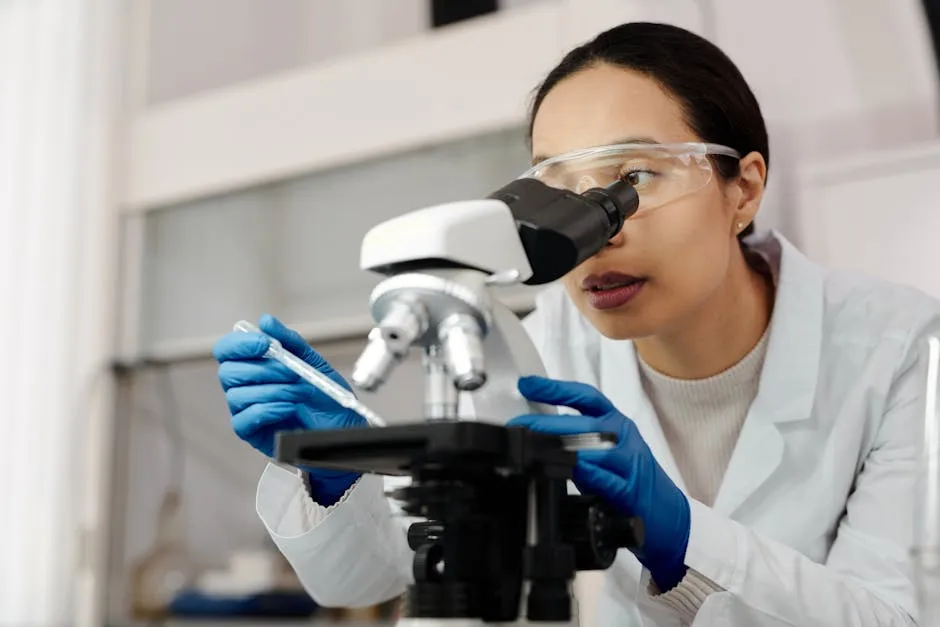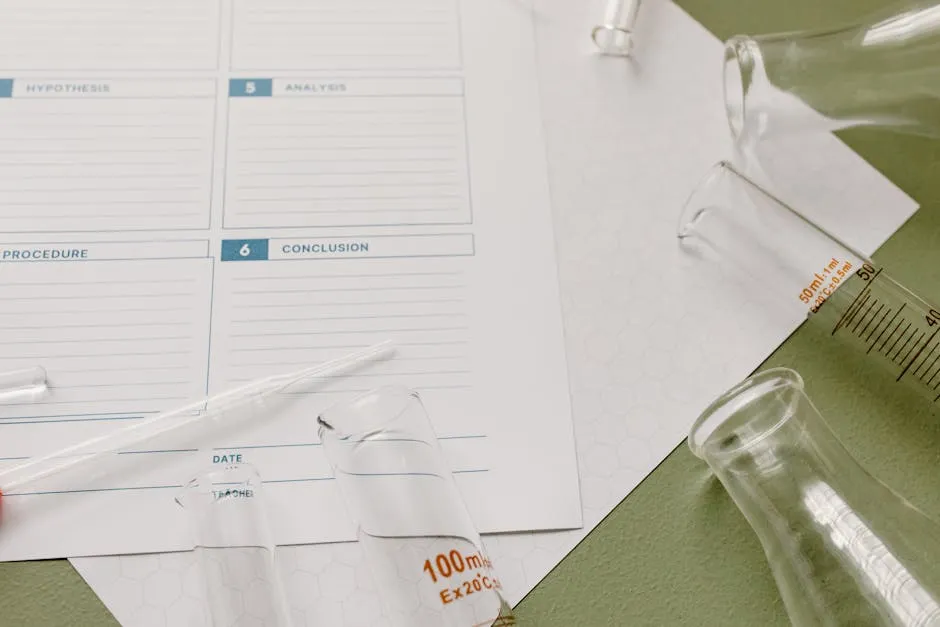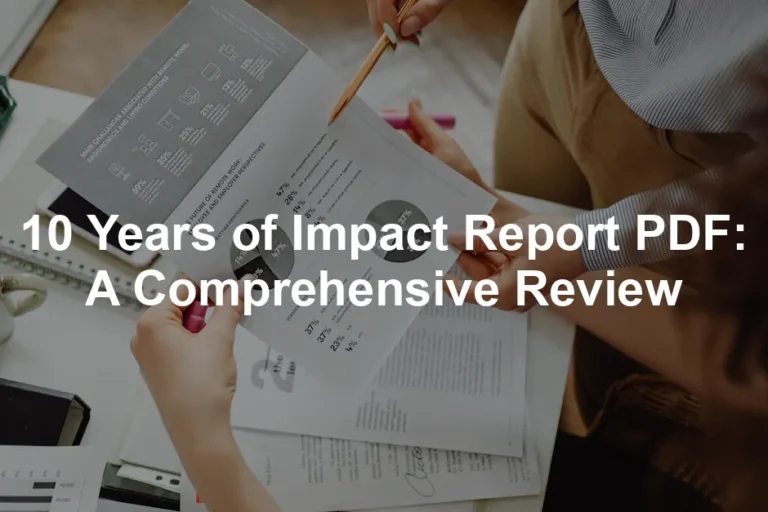Introduction
Understanding the different types of statistical studies is crucial for anyone diving into research. Why? Because the way we gather, analyze, and interpret data can make or break our conclusions. Think of statistical studies as the backbone of research—without a solid structure, the entire project might collapse.
The primary goal of statistical studies is straightforward: to gather, analyze, and interpret data. This process helps us make sense of the world, from predicting trends to informing policy decisions. But here’s where it gets interesting. There are two main types of statistical studies: observational and experimental. Each serves a unique purpose and has its own strengths and weaknesses.
Observational studies allow researchers to observe subjects in their natural environment without interference. It’s like watching a nature documentary—no one is telling the animals what to do. On the other hand, experimental studies involve manipulating variables to observe the effects. Think of it as a science fair project where you change one thing and see what happens.

To deepen your understanding of statistical concepts, grab a copy of “The Art of Statistics: Learning from Data” by David Spiegelhalter. This book will equip you with invaluable insights on how to navigate the complex world of data.
Understanding Statistical Studies
What is a Statistical Study?
A statistical study is a systematic investigation that begins with a question. This four-step process involves asking questions, collecting data, analyzing that data, and drawing conclusions. Every successful statistical study follows these steps, ensuring a structured approach to inquiry.
1. Asking Questions: Start with a clear, concise question. What are you trying to solve?
2. Collecting Data: Gather information relevant to your question. This can be through surveys, experiments, or existing data.
3. Analyzing Data: Once you have the data, use statistical methods to examine it. This may involve calculations, graphs, or software tools.
4. Drawing Conclusions: Finally, interpret your findings. What do they mean in the context of your original question?
By following these steps, researchers can ensure that their studies are well-organized and that the insights drawn are reliable and relevant.

Importance of Study Design
Study design is the blueprint of any research project. It plays a pivotal role in ensuring the validity and reliability of findings. A well-structured study design helps minimize bias and allows for accurate interpretations of results. Conversely, poorly designed studies can lead to erroneous conclusions, wasted resources, and, in some cases, public mistrust.
Common pitfalls in study design include a lack of randomization, small sample sizes, and failure to account for confounding variables. For example, imagine testing a new educational program without considering differences in students’ backgrounds. Such oversights can skew results and mislead stakeholders.
In summary, understanding study design is essential for researchers. A strong design not only enhances credibility but also contributes to the overall advancement of knowledge in the field.
To further enhance your research skills, consider reading “Statistics for Dummies” by Deborah J. Rumsey. It’s a fantastic resource for demystifying statistical concepts and making them accessible.
Types of Statistical Studies
Observational Studies
Definition and Purpose
Observational studies are research methods where data is collected without influencing the subjects. Think of it as watching a movie without directing the actors. Researchers observe and record behaviors, conditions, or events to draw conclusions about a population or to understand relationships between variables. The main goal here is to learn about the world as it is, without interference. This type of study is particularly useful in situations where experimentation is impossible or unethical, like studying the effects of smoking. For a deeper understanding, check out the types of statistical studies.
Understanding the various types of statistical studies is essential for conducting effective research.

Types of Observational Studies
1. Cross-sectional Studies Cross-sectional studies are like snapshots in time. Researchers collect data from a population at one specific moment, capturing a variety of information simultaneously. For instance, a survey might ask 1,000 people about their eating habits in January. This study design helps identify patterns or correlations, but it doesn’t establish causation. You might find that people who eat healthy are generally happier, but you won’t know if the diet causes happiness or if happy people choose healthier foods.
2. Longitudinal Studies Now, if cross-sectional studies are snapshots, longitudinal studies are the full-length films. These studies follow the same group over time, collecting data at various intervals. Imagine tracking a group of students from kindergarten through high school. Researchers can observe how their academic performance changes, revealing trends and long-term effects. While these studies provide valuable insights into changes over time, they require significant time and resources, not to mention the risk of losing participants along the way.
3. Case-Control Studies Case-control studies are a bit like detective work. Researchers compare two groups: those with a specific condition (the cases) and those without it (the controls). For instance, if you want to study the effects of a new drug, you’d look at patients who took the drug versus those who didn’t, analyzing their health outcomes. This method is efficient for studying rare conditions but can suffer from bias, especially if the control group isn’t well matched.

Strengths and Limitations
Observational studies come with their own set of pros and cons. On the positive side, they provide real-world data. Researchers can observe behaviors in natural settings, making findings more applicable to everyday life. For example, studying how people use public transportation can lead to better urban planning.
However, there are drawbacks. The biggest limitation? Causation. Observational studies can highlight correlations but can’t definitively prove one thing causes another. For instance, just because ice cream sales rise alongside drowning incidents doesn’t mean ice cream is the culprit—both may be influenced by hot weather.

As you explore these studies, consider enhancing your understanding of statistics with “Naked Statistics: Stripping the Dread from the Data” by Charles Wheelan. This book will help you appreciate the beauty of statistics without the headache!
Experimental Studies
Definition and Purpose
Experimental studies are the gold standard when it comes to establishing cause-and-effect relationships. In these studies, researchers manipulate one or more variables to see how they affect another variable. Think of it as a controlled chemistry lab experiment where you change the ingredients and observe the reaction. The main purpose is to isolate the effects of the independent variable on the dependent variable, providing clearer evidence of causation.

Types of Experimental Designs
1. Randomized Controlled Trials (RCTs) RCTs are the crème de la crème of experimental designs. Participants are randomly assigned to either the treatment group or the control group, minimizing biases and ensuring that both groups are comparable at the start. This method allows researchers to isolate the treatment’s effect, providing robust evidence for causation. Imagine a new medication being tested: one group receives the drug, while another gets a placebo. The results can reveal whether the medication truly works.
2. Crossover Trials Crossover trials allow participants to serve as their own controls. Each participant receives multiple treatments in a sequence, and researchers compare the effects. This design is particularly useful in clinical trials, as it reduces variability. However, it requires careful planning to avoid carry-over effects—where the first treatment influences the response to the second.
3. Quasi-Experimental Designs Quasi-experimental designs lack random assignment, making them a bit less rigorous than RCTs. Researchers might compare outcomes in groups that were naturally formed, such as students in different schools. While these studies can provide valuable insights, they’re more susceptible to confounding variables, which can cloud the results.

Strengths and Limitations
The strengths of experimental studies lie in their ability to draw clear causal conclusions. By manipulating variables and controlling for others, experiments can provide strong evidence for theories. However, ethical concerns can arise, particularly in fields like medicine. For instance, it wouldn’t be ethical to assign some people to smoke for an experiment. Additionally, experiments can be costly and time-consuming, which might limit their feasibility in certain situations.
In summary, both observational and experimental studies play vital roles in research. Observational studies shine in real-world applicability, while experimental studies excel in establishing causal relationships. Researchers must carefully choose the appropriate design based on their questions and resources, ensuring the most accurate and meaningful results.

Key Elements of Experimental Studies
Experimental studies are the superheroes of research. They have the power to clarify cause-and-effect relationships. But what makes them so effective? Let’s break it down into some key elements.
Control Groups: Think of control groups as the unsung heroes. They don’t receive the experimental treatment, serving as a baseline for comparison. This helps researchers see what happens when you change one variable. Without a control group, how would you know if the treatment worked? It’s like baking a cake; you need a plain cake to compare against your chocolate masterpiece.
Randomization: Randomization is the fairy dust of experimental studies. By randomly assigning participants to different treatment groups, researchers ensure that each group is similar. This minimizes bias and balances known and unknown factors. Imagine flipping a coin to decide who gets the new diet plan versus the old one. Fair, right?
Blinding: Blinding is the secret sauce that adds flavor to experiments. In a single-blind study, participants don’t know if they’re receiving the treatment or a placebo. In double-blind studies, neither the participants nor the researchers know, which further reduces bias. It’s like watching a magician perform; you can’t reveal the trick if you don’t know it yourself!
Sample Size Considerations: Finally, let’s talk about sample size. Bigger isn’t always better, but having enough participants is crucial. A small sample might miss important effects or lead to misleading conclusions. Researchers often calculate the minimum sample size needed to detect an effect, ensuring their findings are robust. Think of it as gathering enough friends for a game night—too few, and it’s just not the same!

Strengths and Limitations
Experimental studies are like a double-edged sword. Their strength lies in their ability to infer causation. When done right, they provide clear evidence of how one variable affects another. If you want to know if a new drug is effective, an experiment is the way to go.
However, ethical considerations can rain on this parade. You can’t just assign participants to smoke cigarettes to see what happens to their health. That’s where observational studies step in, allowing researchers to study real-world scenarios without manipulation.
Practical constraints also come into play. Experiments can be time-consuming and expensive. Researchers need funding, time, and resources to pull off a well-designed experiment. So while experimental studies are powerful, they come with their own set of challenges.
In summary, understanding these key elements and their strengths and limitations is crucial for anyone venturing into research. With the right design and considerations, experimental studies can unlock invaluable insights. So, are you ready to don your lab coat and join the ranks of experimental researchers?

Examples of Statistical Studies
Case Studies
– Example 1: Observational Study on Music and Study Habits Imagine a group of college students, caffeine-fueled and ready to cram for exams. A team of researchers decided to investigate: does listening to music while studying actually help—or is it just a distraction? They crafted a survey to gauge whether students listened to music while studying and their beliefs about its effectiveness. The results showed that many students swore by their playlists, but the data didn’t prove that music improved academic performance. It merely highlighted the diverse study habits of students. So, while your favorite tunes might get you in the zone, the jury is still out on whether they boost your grades.

– Example 2: Experimental Study on Drug Efficacy In the world of pharmaceuticals, rigorous testing is a must. Picture a clinical trial where researchers are pitting a new wonder drug against a placebo. Participants are randomly assigned to receive either the drug or a sugar pill, ensuring that any effects observed can be attributed to the drug itself. After a predetermined period, researchers analyze health outcomes between the two groups. If the treatment group shows significant improvements, it’s a win for science. This method is the gold standard for establishing cause-and-effect relationships in medicine, giving both researchers and patients confidence in new treatments.

– Example 3: Longitudinal Study on Smoking and Health Outcomes Now, let’s take a long stroll down memory lane with a longitudinal study that tracks the health of smokers over decades. Researchers enlist a cohort of smokers and non-smokers, monitoring their health at regular intervals. They collect data on various health metrics, like lung function and incidence of diseases like cancer. This approach allows scientists to observe trends and establish connections between smoking and long-term health effects. The findings provide compelling evidence that smoking is linked to severe health issues. So, if you’re contemplating lighting up, remember: your future self might not be too pleased with your past choices.

For a humorous take on statistics and its quirks, consider reading “How to Lie with Statistics” by Darrell Huff. It will make you chuckle while you learn how statistics can be misrepresented!
Conclusion
Understanding the types of statistical studies is essential for making informed decisions in research. Each study type—observational, experimental, and longitudinal—serves a unique purpose and comes with its own strengths and weaknesses. Observational studies provide insights into real-world behaviors without manipulation, while experimental studies allow researchers to establish causation through controlled conditions.
The design of a study is crucial for ensuring reliable and valid results. A well-structured study can reveal significant relationships and inform future research, while a poorly designed one can lead to misleading conclusions. Therefore, researchers must carefully consider their objectives and select the appropriate study type to align with their goals.
As you embark on your research journey, think critically about your study design. Are you looking to observe natural behaviors, test a hypothesis, or track changes over time? Whatever your aim, a thoughtful approach to choosing the right study type will strengthen your findings and contribute meaningfully to the field. Happy researching!

FAQs
What is the main difference between observational and experimental studies?
Observational studies involve watching subjects in their natural environment without interference. Researchers gather data without altering anything. In contrast, experimental studies manipulate one or more variables to determine their effects. Think of it like a cooking show: observational is watching the chef cook, while experimental is when you try out the recipe yourself!
Can observational studies establish causation?
Not really! Observational studies can demonstrate correlations but fall short of proving causation. Imagine you notice that ice cream sales rise in summer alongside increased pool attendance. This doesn’t mean ice cream causes swimming! Other factors, like the hot weather, could be at play. So, while these studies are useful for spotting trends, they can’t definitively link cause and effect.
How do I choose the right type of study for my research question?
Start with your research goals. For instance, if you aim to understand relationships in a population without intervention, go for observational studies. But if you want to test a hypothesis and draw conclusions about cause and effect, experimental studies are your best bet. Consider your resources too—experimental studies often require more time, funding, and planning.
What are the ethical considerations in conducting experimental studies?
Ethics in research is crucial! Participants must give informed consent, meaning they understand the study’s purpose and any risks involved. Researchers should also ensure that their studies don’t cause harm. This is particularly important in medical experiments, where the stakes can be high. Ethical guidelines help protect participants and maintain the integrity of the research process.
Summary of Key Terms
– Explanatory Variable: This is the variable that researchers manipulate in an experiment. It’s like the main character driving the story forward!
– Response Variable: The outcome that researchers measure to see if it changes due to the explanatory variable. Think of it as the plot twist in the narrative.
– Confounding Variables: These are pesky factors that can muddy the waters by affecting both the explanatory and response variables. They’re the unforeseen plot twists that complicate the story!
– Sample Size: This refers to the number of participants in a study. A larger sample size generally leads to more reliable results, like having a bigger audience for your grand debut!

Please let us know what you think about our content by leaving a comment down below!
Thank you for reading till here 🙂
All images from Pexels




